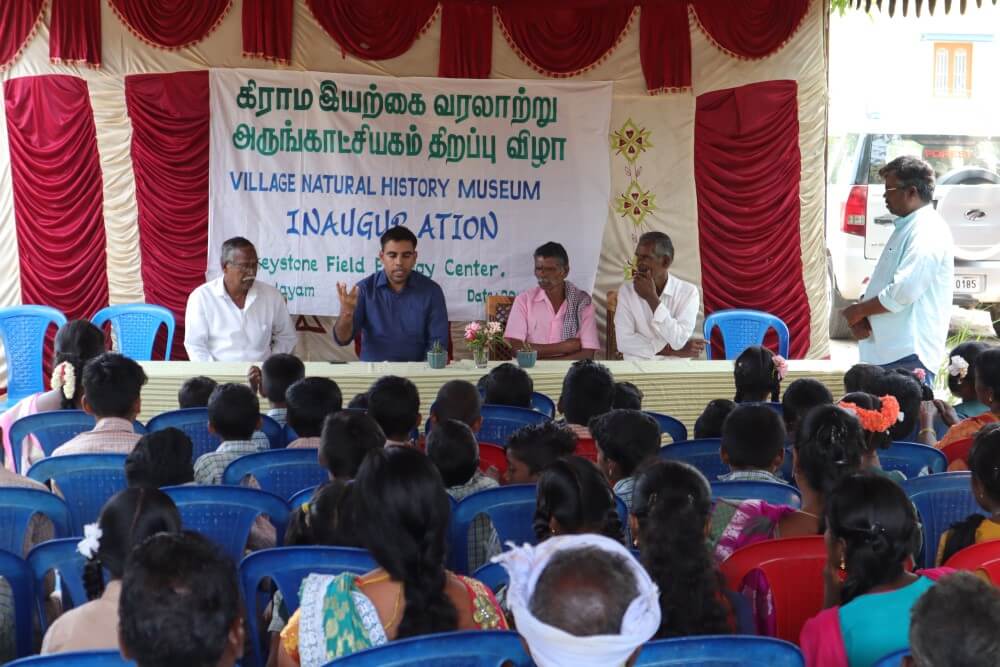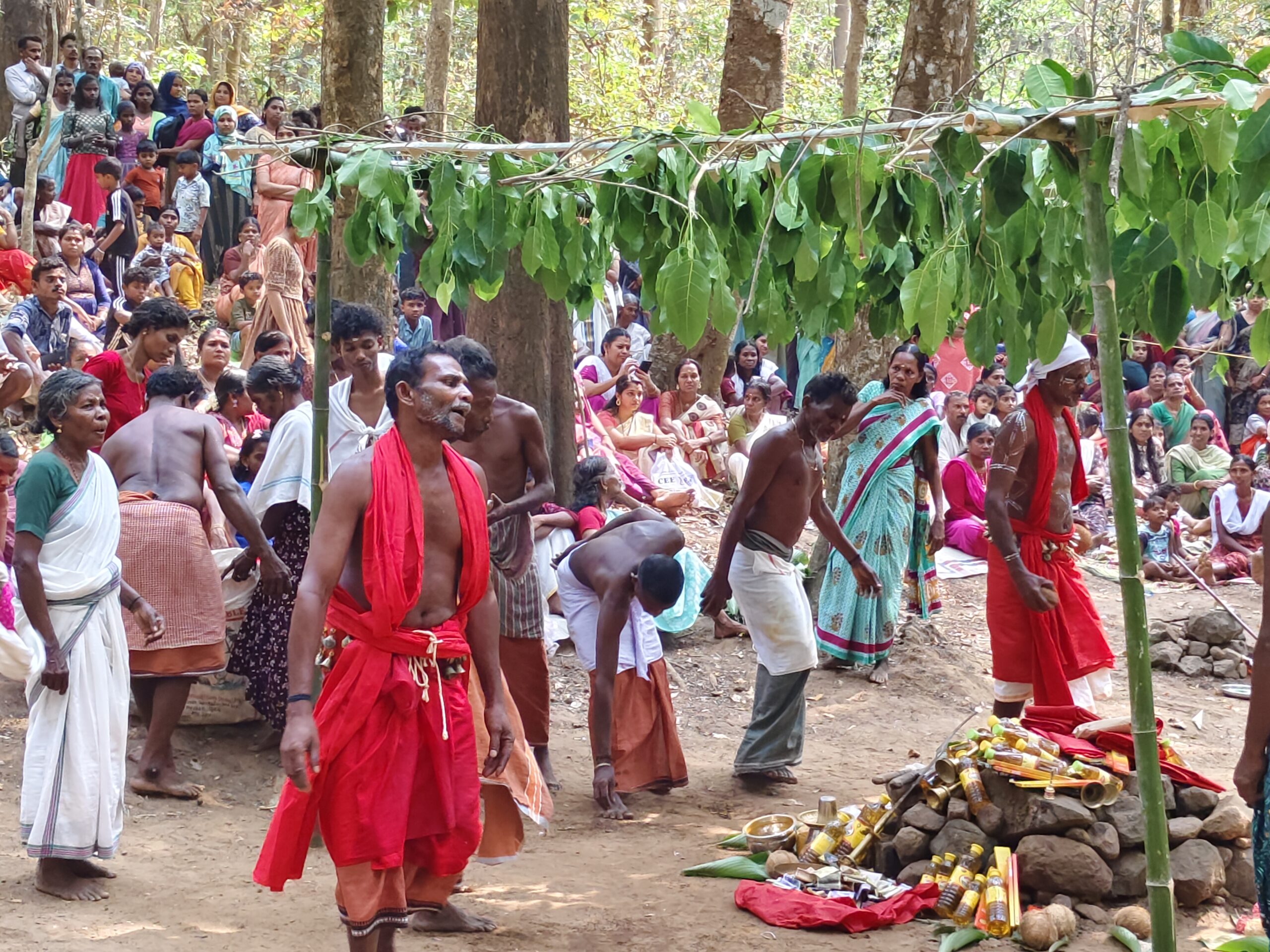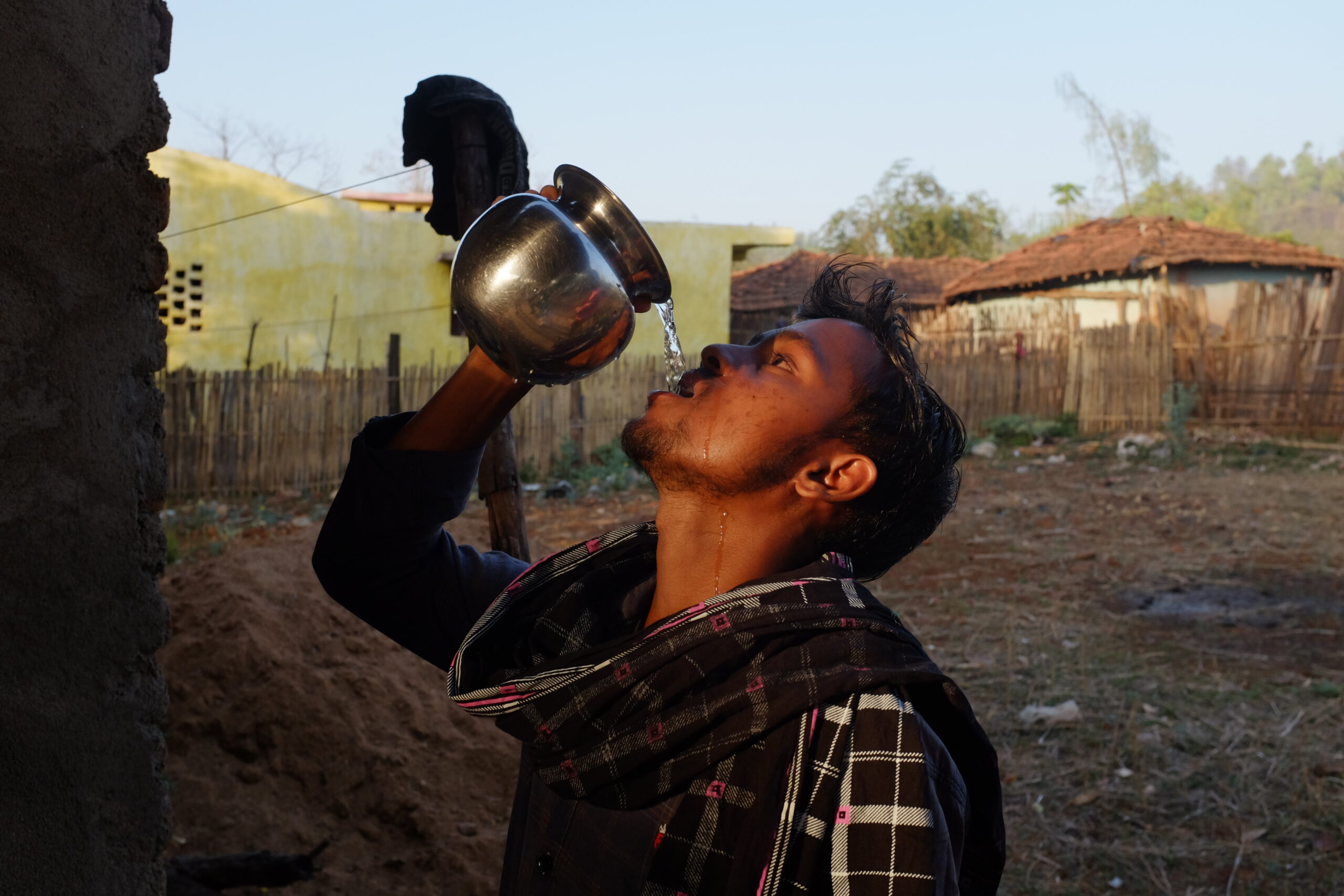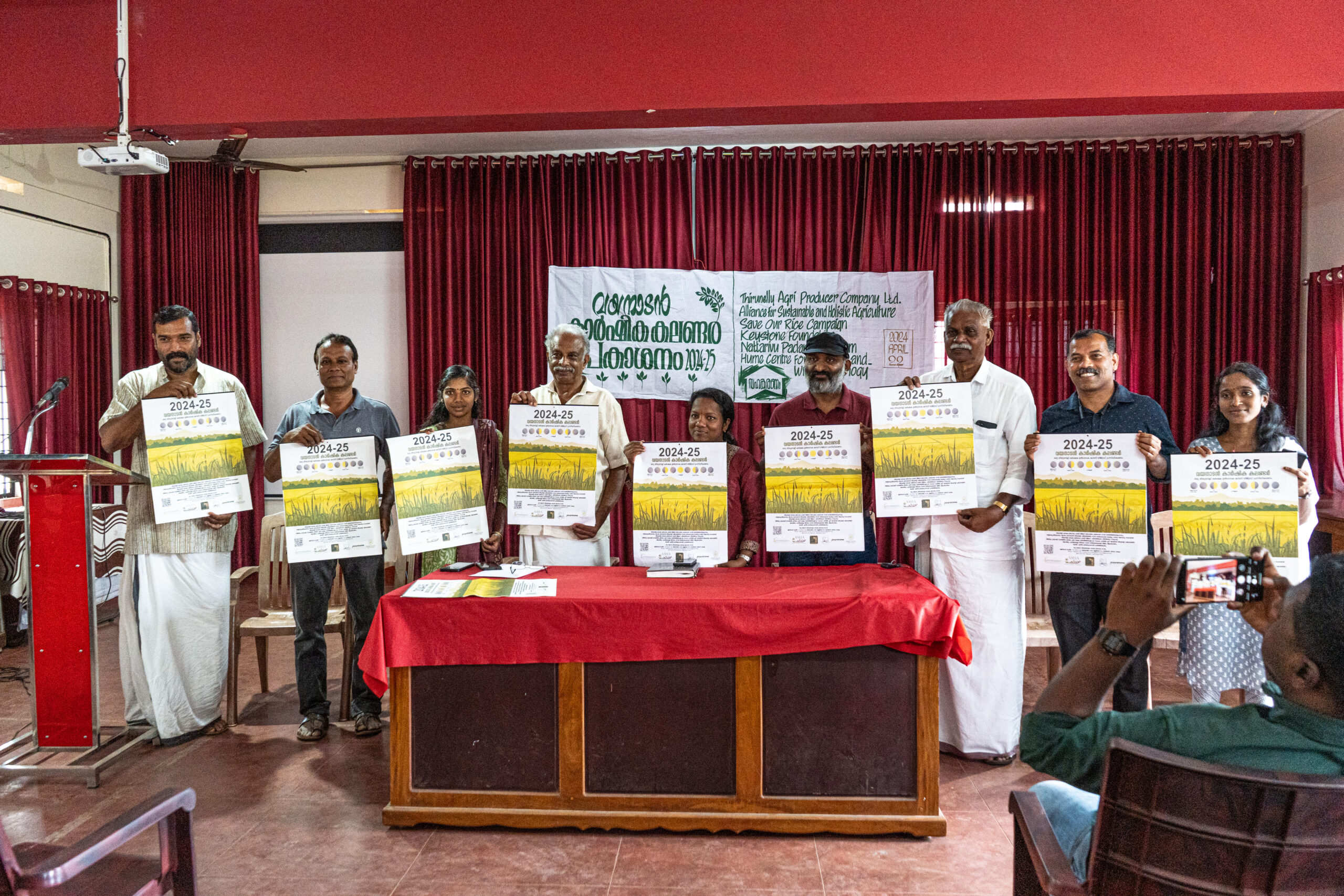On April 20, Keystone’s Sathyamangalam team opened a natural history museum in Arepalayam. The museum will now serve as an ecology learning centre for local communities, especially children, and is filled with informative posters, books, nature games, seed displays, a lab, and a nursery.
The inauguration was attended by several special guests, including Devendra Kumar Meena (DD, Hasanur Division, Sathyamangalam Tiger Reserve), village elders and leaders from Hasanur, Gedessal, Kanagarai, Bejalatty, Itterai, and Mavanatham, barefoot ecologists, villagers, students, and Keystone staff.
The DD was welcomed with auspicious traditional music played by Hasanur’s village elder, Mahadeva, and his band. The event began by lighting the dhoopam, followed by an Adivasi nature song by team member Vijayan (who also pens our community stories). After cutting the ribbon and officially launching the natural history museum, the guests were given a tour of the centre and nursery.

Posters on display included ‘Sathyamangalam Tiger Reserve: An ecotone between the two Ghats’, ‘Wonder about evolution’, and ‘Why should we conserve biodiversity?’ designed by team member Vandana, a detailed illustration of biodiversity of STR by Avni and Muskan Gupta, and illustrations of the Indian Sandalwood, Grey Slender Loris, and Red Avadavat by Ravi Jambhekar, Adyasha Nayak, and Neha Arte, respectively. ‘Wetland birds’ and ‘Woodland birds’ posters in Tamil from Early Bird were also displayed.
These posters will be used to teach students the fundamental concepts of ecology, biodiversity, evolution, coexistence, and conservation. More importantly, they are meant to ignite curiosity and fascination toward nature and instill a sense of responsibility to preserve it. Photographic field guides on mammals, birds, and butterflies were displayed, along with puzzles, games, and short nature story books written in Tamil and English. An empty honeycomb was hung from the ceiling as a model to explain bees, their social behavior and ecosystem role, and sustainable honey-harvesting. A binocular and a digital microscope were set up to talk about the amusing micro-world in biology, showing honeybee wings and onion epidermis slides.
A comprehensive seed display exhibits 57 varieties of seeds of different shapes, sizes, and colors to highlight seed biology. These seeds were collected by team members Vishnu, Vijayan, Shivanna, and Boopathy, from Sathyamangalam area, in the last six months. A tour of the nursery was given by team member Shivanna, who gave a brief on the 64 species of plants, four of which are rare and ten that have medicinal properties. Several photographs taken by Keystone staff during fieldwork were put up on the walls. Team member Mahadesh spoke about Keystone’s past and current work in the region, highlighting the positive relationship we have had with local communities and the Forest department, which we will work towards strengthening, going forward.

Each chairperson spoke a few lines about the importance of biodiversity, culture, and the relationships between nature and indigenous people. They advised the school children to keep in touch with traditional medicinal and cultural knowledge and practices, as their previous generations did. A few village elders also sang folk songs in the local language, which all of us enjoyed. The DD was gifted a memento as a token of our appreciation by Mahadesha, and the village elders and leaders were honored with a shawl by Vishnu.
The event ended merrily with traditional music and dance, distribution of saplings from the nursery, and a delicious lunch. We hope that this is the start of a stronger bond with all our visitors, bringing nature, culture, and coexistence together.

















